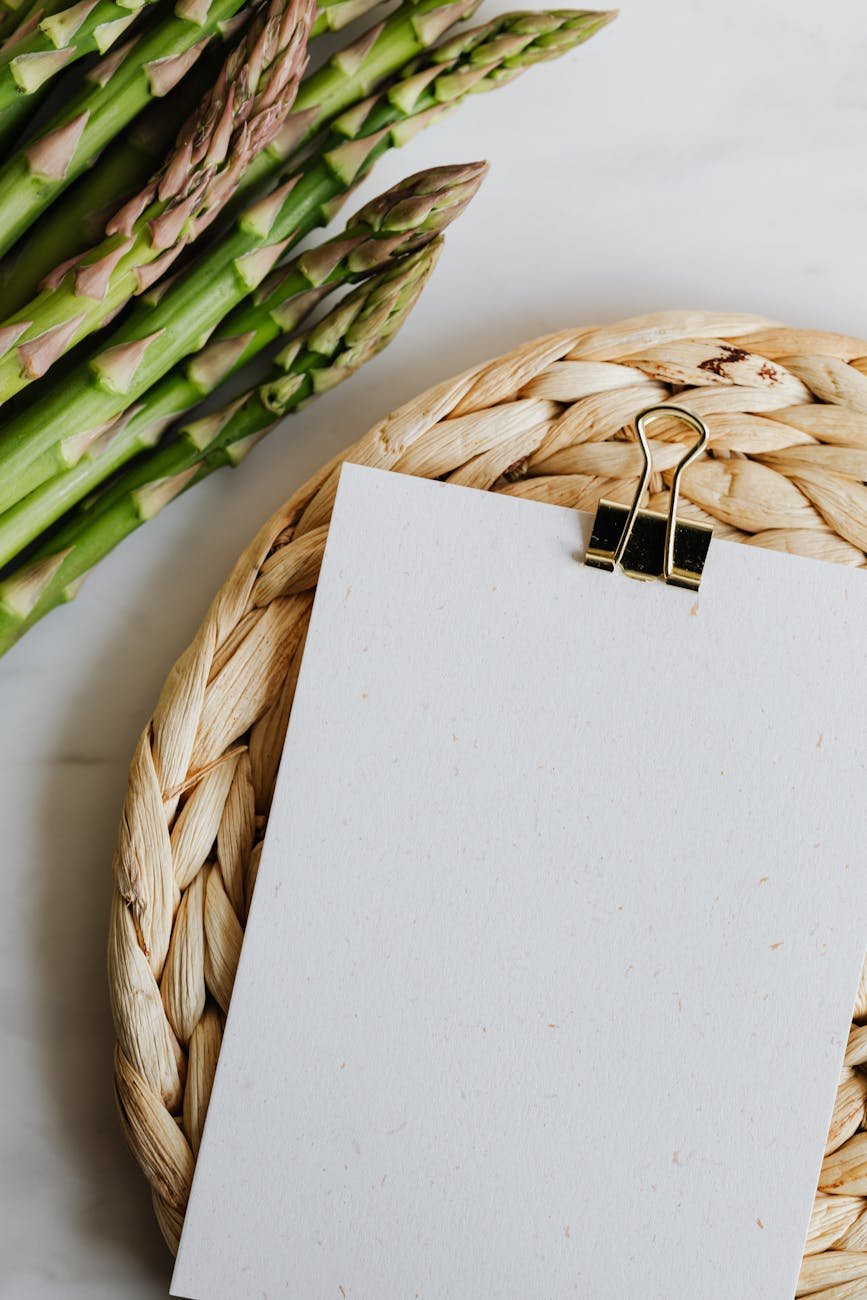Cooking Asparagus: Blanching vs. Steaming
When it comes to preparing asparagus, two popular methods stand out: blanching and steaming. Each technique has its advocates and can bring out unique flavors and textures in this beloved vegetable.
The Debate: Blanching or Steaming Asparagus
The debate between blanching and steaming asparagus centers on the end result in terms of flavor, texture, nutrition, and color. Blanching involves submerging asparagus in boiling water and then halting the cooking process with cold water, while steaming involves cooking asparagus by exposing it to steam. Both methods have their merits and can be used effectively depending on the desired outcome.
For a deeper dive into the various ways to prepare asparagus, explore our comprehensive guide on how can you cook asparagus?
Factors to Consider Before Choosing a Cooking Method
Before deciding whether to blanch or steam asparagus, consider the following factors:
- Nutritional Retention: Some nutrients may leach into water when blanched, whereas steaming might better preserve these nutrients.
- Texture: The desired tenderness of the asparagus can influence the choice of method. Blanching often results in a crisper texture, while steaming can produce a more tender result.
- Flavor Concentration: Steaming can concentrate the natural flavors of asparagus, whereas blanching might dilute them slightly due to water contact.
- Color Vibrancy: Blanching can help maintain the bright green color of asparagus, making it a popular choice for dishes where visual presentation is key.
- Preparation Time: Steaming might require less active preparation time compared to blanching, which includes the step of shocking the asparagus in cold water.
- Cooking Equipment: The availability of kitchen equipment may also dictate the method. While a pot can be used for both methods, a steamer basket is necessary for steaming.
- Serving Temperature: Considering whether the asparagus will be served hot or cold can also guide the method choice, as blanching is well-suited for cold dishes.
Understanding the nuances of each cooking method will help young home chefs and asparagus enthusiasts make an informed decision that aligns with their culinary goals. For additional insights into cooking this versatile vegetable, readers can explore various techniques and tips in our articles on how can you cook asparagus?
Blanching Asparagus
Blanching is a cooking process that involves briefly boiling vegetables and then plunging them into ice water. This method is commonly used for asparagus when one seeks to maintain its vibrant green color and crisp texture.
How to Blanch Asparagus
Blanching asparagus is a simple process that requires just a few steps:
- Wash the asparagus and trim off the tough ends.
- Bring a pot of salted water to a rolling boil.
- Prepare a bowl of ice water large enough to hold the asparagus.
- Place the asparagus in the boiling water and let it cook for 2-4 minutes, depending on the thickness of the stalks.
- Using tongs, quickly transfer the asparagus from the boiling water to the ice bath to halt the cooking process.
- After the asparagus has cooled, remove it from the ice bath and pat it dry with a towel.
For further details on blanching techniques and times, refer to our article on how can you cook asparagus?
Pros and Cons of Blanching
Blanching asparagus has its advantages and disadvantages, which should be considered before choosing this cooking method.
Pros:
| Advantage | Description |
|---|---|
| Color Retention | Blanching preserves the bright green color of the asparagus. |
| Texture | Results in a crisp-tender texture, ideal for salads or as a chilled side. |
| Flavor | Maintains a fresh and natural flavor of the asparagus. |
| Nutrient Retention | Quick cooking time helps to retain more vitamins and minerals. |
Cons:
| Disadvantage | Description |
|---|---|
| Extra Steps | Requires preparation of an ice bath and transfer of asparagus between pots. |
| Equipment | Needs both a pot for boiling and a bowl for the ice water. |
| Watchfulness | Requires attention to prevent overcooking. |
Blanching is a suitable method for those who prefer their asparagus to maintain a bit of crunch and want to keep the fresh flavor and color intact. It is particularly useful for dishes where the asparagus will be served cold or at room temperature, as in salads or appetizers. However, the need for vigilance and the additional steps involved might not appeal to everyone. For an alternative cooking method that might suit different preferences, read about the benefits of steaming asparagus in our next section or explore other methods in our comprehensive guide, how can you cook asparagus?
Steaming Asparagus
Steaming is a popular method for cooking asparagus that allows for the preservation of nutrients and flavor. This method involves cooking the asparagus by exposing it to steam, which gently cooks the vegetable without immersing it in water.
How to Steam Asparagus
To steam asparagus, one will need a pot with a tight-fitting lid and a steamer basket that sits above the water level. Here’s a simple step-by-step process:
- Wash the asparagus spears and trim off the tough ends.
- Fill the pot with about two inches of water and bring it to a simmer.
- Place the asparagus in the steamer basket and then place the basket in the pot.
- Cover the pot with the lid and allow the asparagus to steam for about 3-5 minutes, depending on the thickness of the spears.
- The asparagus is done when it is bright green and tender but still slightly crisp.
For those seeking various ways to cook asparagus, our collection of articles on how can you cook asparagus? provides a wealth of information and techniques.
Pros and Cons of Steaming
| Pros | Cons |
|---|---|
| Preserves nutrients and color | Requires a steamer basket and pot with lid |
| Maintains a crisp texture | Can be less flavorful than other methods if not seasoned properly |
| Can be seasoned during steaming | Timing must be precise to avoid overcooking |
| Suitable for a variety of dietary needs |
Pros:
- Nutrient Retention: Steaming asparagus helps to retain its vitamins and minerals better than methods that involve immersing it in water.
- Texture: This method typically results in a tender yet crisp texture, which many find appealing.
- Versatility: Steamed asparagus can be served as is or used in a variety of dishes, from salads to entrees.
- Healthier Option: Steaming requires no added fats, making it a healthier option for those watching their calorie intake.
Cons:
- Equipment Specific: Requires specific equipment, such as a steamer basket and a pot with a lid.
- Flavor: While steaming preserves the vegetable’s natural flavor, it may be less robust compared to other cooking methods unless properly seasoned.
- Timing: It is crucial to time the steaming process correctly to avoid overcooking, which can result in a mushy texture.
When considering how to prepare asparagus, steaming is a straightforward and healthy choice that works well for many home chefs. It’s particularly effective for preserving the integrity and nutritional value of the vegetable. For those looking to explore different methods and recipes for cooking asparagus, click how can you cook asparagus? for more insights and ideas.
Choosing the Right Method for You
When it comes to preparing asparagus, the cooking method can significantly influence the final taste and texture of the dish. Both blanching and steaming are excellent techniques, but the best choice depends on individual preferences and circumstances.
Taste and Texture Considerations
Asparagus enthusiasts often look for a method that highlights the vegetable’s natural flavors while achieving a desirable texture.
- Blanching typically results in a more vibrant green color and a crisper texture. This method can accentuate the freshness of asparagus, making it a suitable choice for salads or dishes where a crunch is desired.
- Steaming, on the other hand, tends to produce a softer texture and can help preserve the asparagus’s subtle flavors. This technique is ideal for those who prefer a tender, less fibrous bite.
Here’s a quick comparison of how each method affects the taste and texture of asparagus:
| Method | Color | Texture | Flavor Preservation |
|---|---|---|---|
| Blanching | Vibrant Green | Crispier | Good |
| Steaming | Bright Green | Softer | Excellent |
For further exploration of asparagus preparation, the article how can you cook asparagus? provides more insights.
Time and Convenience Factors
In addition to taste and texture, time and convenience play a crucial role in deciding how to cook asparagus.
- Blanching is often quicker than steaming, requiring only a brief immersion in boiling water followed by an ice bath to halt the cooking process. This method is efficient for cooks who value speed or are preparing large quantities.
- Steaming may take slightly longer but generally requires less active cooking time. It’s a hands-off approach that allows home chefs to focus on other meal components while the asparagus cooks.
Consider the following time comparison for cooking a standard bunch of asparagus:
| Method | Preparation Time | Cooking Time | Total Time |
|---|---|---|---|
| Blanching | 2 minutes | 2-3 minutes | 4-5 minutes |
| Steaming | 1 minute | 4-6 minutes | 5-7 minutes |
Ultimately, the choice between blanching and steaming asparagus boils down to personal preference for taste and texture, as well as practical considerations like time and ease of preparation. Whether seeking a crisp addition to a salad or a tender side to a main dish, each method has its merits. By weighing these factors, home cooks can select the method that best suits their needs and enjoy asparagus cooked to perfection. For more culinary tips and techniques related to asparagus, visit how can you cook asparagus?.
- Discover the best cooking methods for asparagus and learn how to cut and cook fresh asparagus



